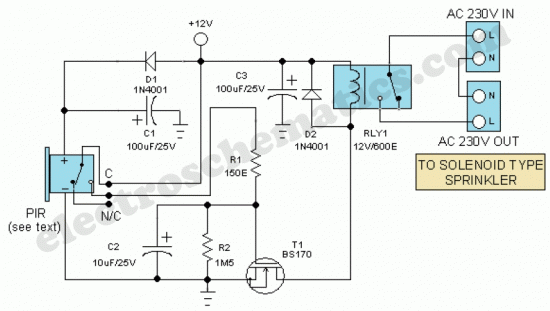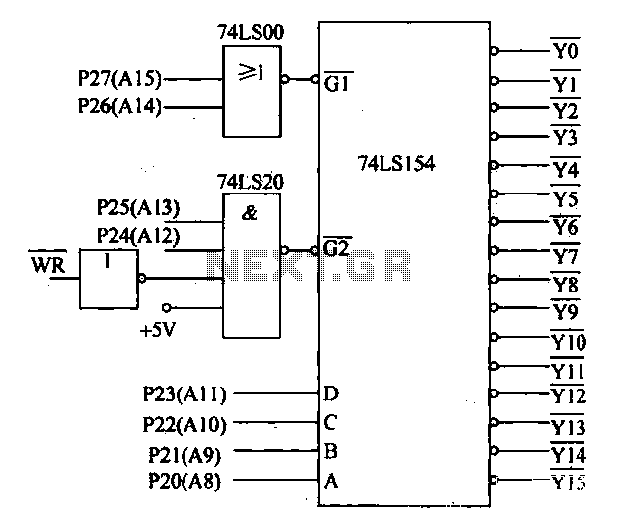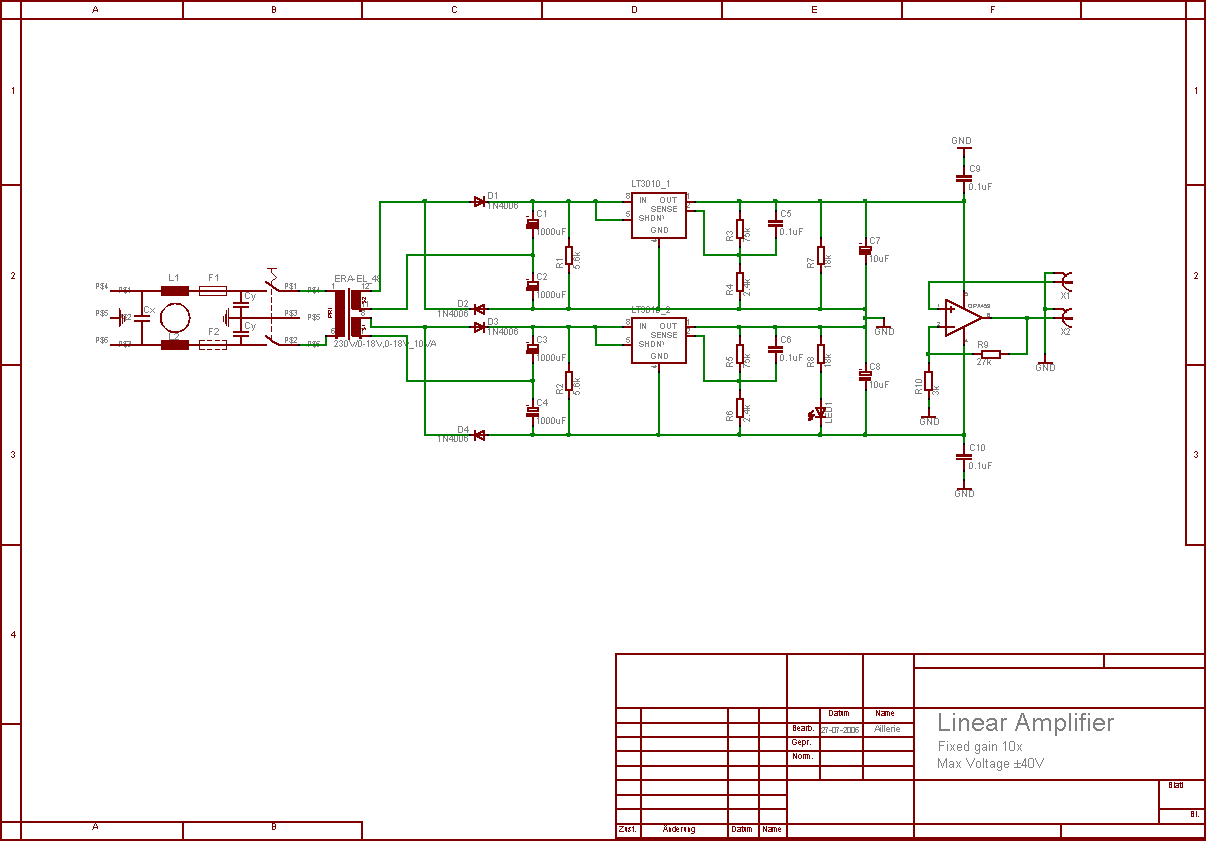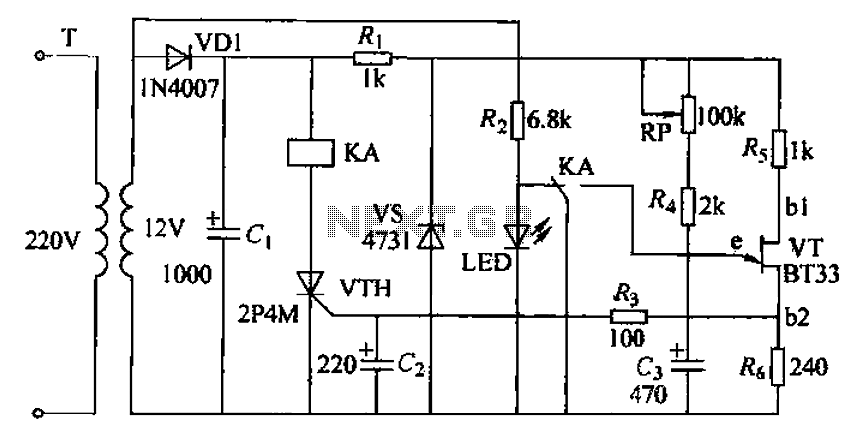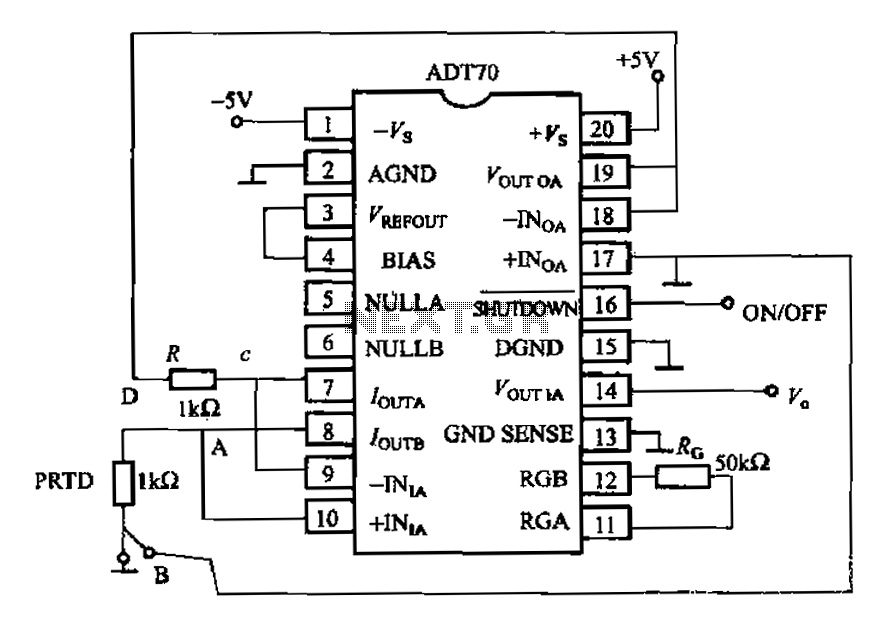
Liquid or Water Sensor Circuit with Alarm
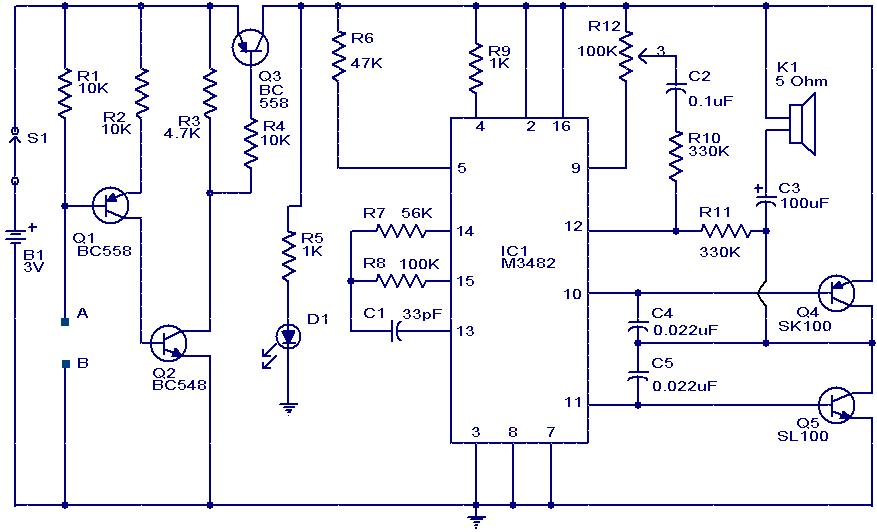
This is a hobby circuit designed as a water or liquid sensor. Its primary function is to activate an alarm when water or liquid is detected at its probes.
The water sensor circuit typically consists of a few essential components, including a pair of conductive probes, a comparator circuit, and an alarm system. The probes are placed in the environment where liquid detection is desired. When water or another conductive liquid comes into contact with the probes, it completes the circuit between them.
The comparator circuit, often built using an operational amplifier (op-amp), continuously monitors the voltage across the probes. In a dry state, the resistance between the probes is high, resulting in a low voltage reading. When liquid is present, the resistance decreases, causing the voltage to rise above a predetermined threshold. This change is detected by the comparator.
Upon detecting the presence of liquid, the comparator output switches state, triggering the alarm system. The alarm can be an audible buzzer, LED indicator, or other alert mechanisms, depending on the design requirements. Additional features may include adjustable sensitivity to accommodate different types of liquids or environmental conditions.
Power supply considerations are also crucial for the circuit's operation. Typically, a low-voltage power source, such as a battery or a DC power supply, is used to ensure safe operation. The circuit can be further enhanced by incorporating a microcontroller for more advanced functionalities, such as data logging or remote notifications.
Overall, this water sensor circuit serves as a practical solution for hobbyists seeking to create simple yet effective liquid detection systems for various applications, including leak detection, overflow prevention, and agricultural monitoring.This is just a fun/hobby circuit which can be used as a water sensor circuit or a liquid sensor circuit.What it does is sound an alarm in presence of water/liquid at its probes.. 🔗 External reference
The water sensor circuit typically consists of a few essential components, including a pair of conductive probes, a comparator circuit, and an alarm system. The probes are placed in the environment where liquid detection is desired. When water or another conductive liquid comes into contact with the probes, it completes the circuit between them.
The comparator circuit, often built using an operational amplifier (op-amp), continuously monitors the voltage across the probes. In a dry state, the resistance between the probes is high, resulting in a low voltage reading. When liquid is present, the resistance decreases, causing the voltage to rise above a predetermined threshold. This change is detected by the comparator.
Upon detecting the presence of liquid, the comparator output switches state, triggering the alarm system. The alarm can be an audible buzzer, LED indicator, or other alert mechanisms, depending on the design requirements. Additional features may include adjustable sensitivity to accommodate different types of liquids or environmental conditions.
Power supply considerations are also crucial for the circuit's operation. Typically, a low-voltage power source, such as a battery or a DC power supply, is used to ensure safe operation. The circuit can be further enhanced by incorporating a microcontroller for more advanced functionalities, such as data logging or remote notifications.
Overall, this water sensor circuit serves as a practical solution for hobbyists seeking to create simple yet effective liquid detection systems for various applications, including leak detection, overflow prevention, and agricultural monitoring.This is just a fun/hobby circuit which can be used as a water sensor circuit or a liquid sensor circuit.What it does is sound an alarm in presence of water/liquid at its probes.. 🔗 External reference
